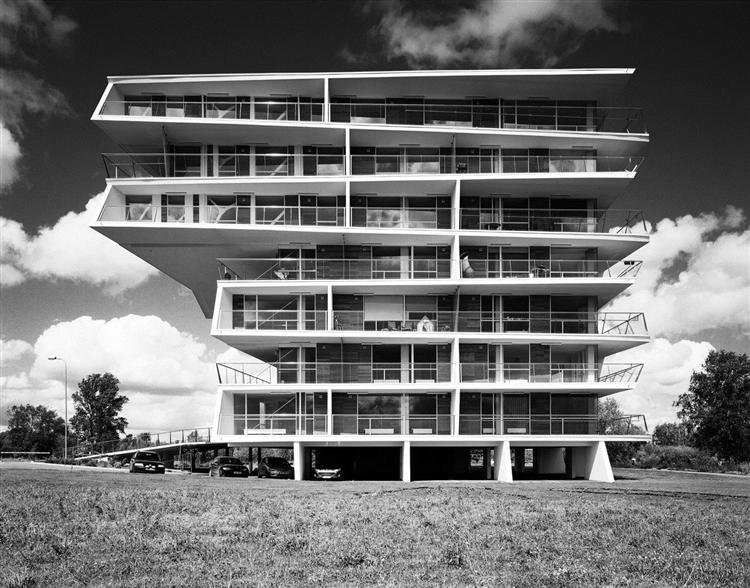L’Esprit Nouveau!: Corbusier's Architectural Manifesto
https://www.engelvoelkers.com/en/blog/luxury-living/architecture/le-corbusiers-style-and-design-philosophy/
https://www.studio2a.net/corbusier-manifesto-five-points-of-new-architecture/
L’Esprit Nouveau: Corbusier's Architectural Manifesto
Full Disclosure
To my great surprise, during my research, I found out Le Corbusier was a Nazi. -Well, there is debate. Some argue that Corbusier was no fascist, but an opportunist who would suck up to any regime in order to get his buildings made. I have no intention to make my mind up on whether Corbusier was or wasn't a fascist. We'll never truly know and his association with Vichy is enough for me to feel uneasy. It reminds me of being 15 again, going into my city's art scene thinking,
'These people are artists; they must be good people! No artist could ever be a bad person!'
There is no hint of irony there, that was quite a dangerous way of thinking. Unfortunately the art world harbours a lot of predators; I've been exploited by some of them. I still forget today, that a person may have been a great artist, a genius but that does not mean they were a good person. Or even a happy one. I think as young artists it's important to protect ourselves by remembering this. That we are careful over who we aspire to/ who we associate with.
I considered not writing a post on his manifesto's because of this. But I thought so many great artists and radical thinkers (Salvador Dali, Gertrude Stein, Celine, Marinetti, T.S Elliot, and I'm sure many many others) all have unsavoury fascist connections. I wanted to make it clear before we go ahead; I absolutely hate researching into an artist, admiring them and only half way through finding out they were 'x' horrible thing. Oh so everyone just forgot to mention it then ?!? Going forward we shall have to do our best to acknowledge this information, and leave it to the side (just for a little while).
For Those Who Don't Know
I've come across Le Corbusier before. I choose to study Brutalism for very first project on my Extended Art Diploma, it has quite the place in my heart. Corbusier had featured in my research. In honesty, there was not much about him that I remembered.
Charles-Édouard Jeanneret-Gris (Le Corbusier was a pseudonym) was Swiss by birth. He spent a lot of time travelling around Europe and eventually took a permanent residence in Paris. As well as an architect Corbusier was a writer, editor, sculptor, painter and city planner.
'The Five Points of a New Architecture' (1927)
Le Corbusier's manifesto was published in L'Esprit Nouveau, a magazine he founded with the poet Paul Dermée and painter Amédée Ozenfant in 1920.
1. Pilotis. Replacement of ground floor supporting walls by a grid of reinforced concrete columns that bear the structural load is the basis of the new aesthetic.
2. The free design of the ground plan. Raised on free-standing columns with the absence of supporting walls, means the ground floor is unrestrained in its internal use.
3. The free design of the façade. Separating the exterior of the building from its structural function sets the façade free from conventional structural constraints.
4. Horizontal windows. The absence of load-bearing walls allows for windows of any size. Large horizontal windows increase the sense of space and lights rooms equally.
5. Roof garden. A flat roof can serve a domestic purpose while providing essential protection to the concrete roof.
Blueprint
At first glance Corbusier and his manifesto seem to have no relevance or applicability to my own practise. But there was something I couldn't shake off about this manifesto. The manifesto resonated with me, but I wasn't sure why. In a slightly manic episode of tossing and turning in my bed - I produced some rather frantic scribbles getting to the bottom of my Corbusier mystery. Writing pen on paper allows me to untangle my thoughts and instincts - a tool I intend to use throughout my Art Foundation.
Corbusier's manifesto is simple and straight forward. It has a very impersonal tone, which I really like, compared to other artist manifestos that are snarky and highly emotional. Five Points has clear vision and conviction, it's a blueprint. There is a sense of real skill and refinement in it's simplicity. In my own practise when making a zine I can spend months trying different layouts and combinations, to eventually land on something very simple. Simplicity is not without it's toil. The manifesto is short and concise, which feels less intimidating and easier to visualise than the other manifestos. Even aesthetically, the five bullet points and short sentences are very pleasing to me. It just gives me good vibes.
The Five Points of a New Architecture reminds me of the Dogme 95 Manifesto; really what's in front of us is a set of restrictions. This could be a useful tool in my own manifesto. One of my goals for my Art Foundation is to develop a consistent aesthetic. Conforming to a set of rules might aid in my discovery of that. Restrictions could be a really fun way to challenge myself, to force myself to be innovative. I also think restrictions could be time effective. After spending two years doing an Art Diploma I know how quickly time goes. Time can easily be lost to meandering.
I especially like point two, free design of the ground plan. I read that the free design creates floor space that allows for future changes. Space that allows for future changes caught my attention. I look back on my own artwork and I never left space for future changes. I was inspired by this thought, to leave space for future change.





Comments
Post a Comment